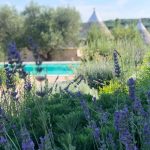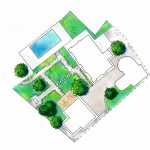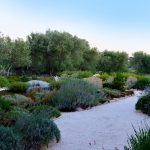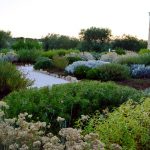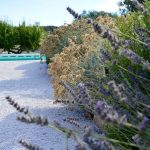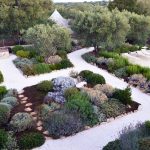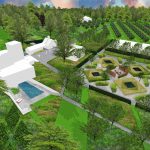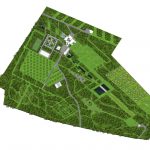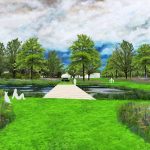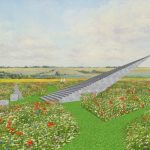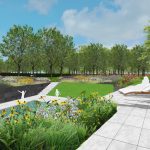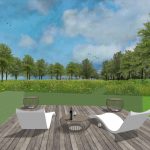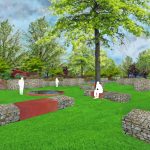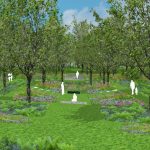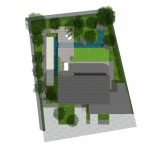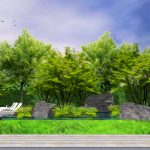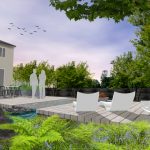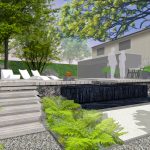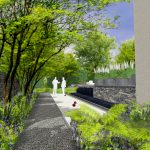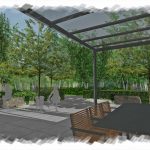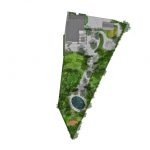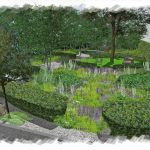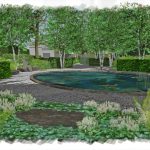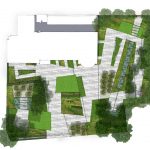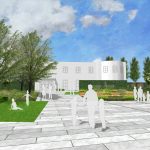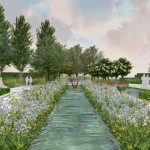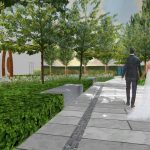Alberto Caffi
Alberto Caffi graduated from the London College of Garden Design in 2020
Biography:
Personal love and passion for Art and Nature led me to study them both.
I attended the Santa Giulia Academy of Fine Arts in Brescia and, subsequently, I graduated in Natural Sciences at the University of Padua.
Moving to Australia in 2012, only increased my love of plants and led me to study Horticulture, as well as
working as a landscape gardener for nearly six years in Sydney.
This gave me the practical tools and experience to fully understand plants and client’s needs, fundamental elements for the success of a project.
I graduated from the London College of Garden Design in July 2020.
During the course, I had the opportunity to be tutored by some of the main professionals in the field. Their feedback and exchange of opinions allowed me to further improve my design skills to offer superior quality in the creation of clients’ gardens.
OSTUNI (BR) – APULIA
ITALY
Lamatroccola Country Home is a complex of Trulli and lamias used as an accommodation facility.
Located in the beautiful countryside of the Itria Valley, among centuries-old olive trees and dry-stone walls, it has recently been renovated with local materials and techniques.
For the outdoor space, a complete and radical restyling was carried out with the creation of a saltwater swimming pool and a suggestive Mediterranean garden.
The designed space is divided by white gravel paths, bordered by local stones, which connect the various units of the property.
Within the garden beds, a selection of Mediterranean plants, with a medium-low growing habit, creates a pleasant sensorial atmosphere through scents and colours.
The idea of recreating a Mediterranean scrub was conceived, not only from an aesthetic point of view but also to encourage the arrival and proliferation of pollinating insects, creating a local ecosystem.
PRIVETT – HAMPSHIRE
UNITED KINGDOM
Covering over ten and a half hectares (twenty-six acres), the Coles estate is situated on chalk downland in a rural valley north of Privett’s hamlet in Hampshire.
In the southern part, the property is covered by mature woodland, with a predominance of acid-loving plants. On the north side, however, it opens onto the nearby rapeseed fields.
With the recent construction of a modern house, designed by AR Architects, contrasting with the old 18th-century country buildings, the site has gained even greater interest and charm.
The outdoor spaces’ design concept involves connecting the new house with the surrounding area, without letting the latter impose itself on the landscape.
The intention was also to bring and amplify, in a contemporary key, the character and atmosphere of the rural world.
Perspective views, carefully studied, create a link between the two worlds: modernity and rurality complement and support each other.
In this project, I wanted to join the house’s architectural forms with the surrounding space through the inclusion of diagonals and designed angles. From the intersection of these elements, trapezoidal shapes arise, which combine areas of the garden with various function and atmosphere.
The use of these spaces, in fact, is not aimed only at a private clientele but is designed to be also enjoyed by the public on request. In this sense, the project wanted to accentuate some areas’ scenic aspects within the large surface. Each has its own story to tell and emotion to convey: The Haystacks Walk, the Infinite Stairway, the Four Water Mirrors, and the Post-War Rockery.
AMERSHAM – THE CHILTERNS HILLS
UNITED KINGDOM
The design intervention concerned the outdoor space of a private residential house located near Chesham Bois. The view from the garden to the wood was the key factor for the investment by the owners, a couple of architects, whose request was to have a place to relax, entertain and play bocce.
The idea was to create a direct link between the house and the wood, bringing elements of the woodland within the boundaries of the garden through the use of natural materials, such as rock and timber, together with a characteristic planting scheme consisting of shrubs and species of the undergrowth.
The garden becomes the place where the wild and spontaneous aspect of the forest is related with the order and rationality of the design, implemented through strictly geometric forms inspired by modern architecture’s straight lines and rectangular shapes.
A glass bridge suspended over a water stream, which flows and opens into a gentle waterfall, becomes the point of union between the two zones and the two functional spaces, one dedicated to relaxation and the other to conviviality.
ASCOT – BERKSHIRE
UNITED KINGDOM
The property, an old Victorian cottage, sits in a quiet residential area bordering on the East side with a protected Woodland. The client is a young family with a daughter and a friendly dog.
Their main requests included to keep the ancient beech in the central area and to subdivide the external space into various zones.
Given the unusual shape of the surface to be planned, the action was taken by dividing it into four separate areas through the undulating movements of low evergreen hedges.
Inspired by tea crops, they also act as a visual link between the more extended boundaries of the property, adding dynamism and unifying the entire design.
A paved area around the veranda serves as a social space.
Cherry and almond trees offer shade and fruits during the warmer seasons and are a source of interest throughout the year.
On the side, a modern-Victorian-style domed greenhouse was designed to allow the cultivation of herbs, vegetables and medicinal plants, a great passion of the owner.
A sinuous gravel path leads through a birch forest to a more intimate and reserved space, a “secret garden”, where an oval pond and a summerhouse in wooden shingles are placed for moments of relaxation.
Marble boulders, dotted across the garden, provide seating and create an elegant joining element.
The planting, inspired by the woodland undergrowth and woodland meadows, is divided into three parts characterized by different levels of light-shadow.
Cambridge Cottage, located within the World Heritage Site of The Royal Botanic Gardens, Kew, was the residence of the Duke of Cambridge until the late 1800s. It is currently a well-known venue for weddings and private parties. The client’s request was to improve the definition and management of the outdoor spaces, maintaining a connection to the nearby Duke’s Garden while keeping its independence and privacy.
The inspiration for the project came from researching the history of the house through letters and manuscripts preserved in the Kew library.
The discovery of these pieces of past Life, metaphorically compared to ‘fragments of Time’, led me to think of the space as a set of broken elements that take on different geometric shapes, whose interlocking wants to symbolize the reconstruction of the place’s history.
In particular, the triangular shapes gave the possibility to create long vistas, play with spaces and divide them into different zones, open and sunny around the house, calm and private along the boundaries.
These geometric elements are represented by paved areas, manicured lawns, blocks of hedges and garden beds planted with a dreamy mix of ornamental grasses and perennials.
Broad-leaf trees provide height and shade.
Water features add a sense of tranquillity and stillness. The long water channel creates a direct axis between the restored original entrance and a raised seating area, from which a trickle of water gushes out of a metal tank ‘cutting’ the slate flooring through.
Groups of bespoke timber and stainless-steel containers, holding standard orange trees, evoke and recall the presence of the old Conservatory.
A charming avenue of cherry trees shadows the series of seating of the intimate western area, offering a fascinating spectacle, especially during the spring blossom.
The result intends to be a fresh, modern, and dynamic design where people can celebrate Life and add precious memories to the vast collection of this place.

